(Click on any image to view it in high resolution.)
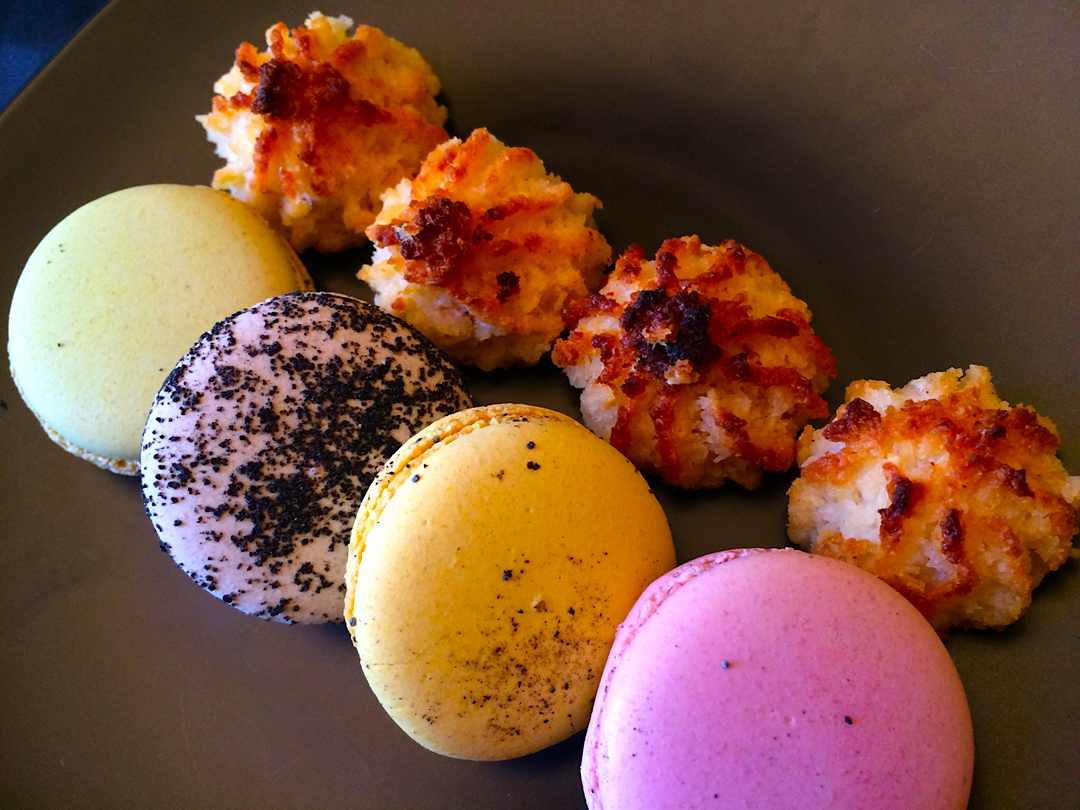
There seems to be some confusion regarding these two very dissimilar cookies with very similar names, but oh, what a difference an O makes. Read on and all will be revealed….

(Click on any image to view it in high resolution.)

There seems to be some confusion regarding these two very dissimilar cookies with very similar names, but oh, what a difference an O makes. Read on and all will be revealed….
(Originally posted on April 20, 2019, in better times.)
(Click on any image to view it in high resolution.)

Previously on ethnojunkie.com, I did a springtime post that included a story about someone who dared me to come up with an ethnic fusion Passover menu. I wrote:
Well, far be it from me to dodge a culinary challenge! So although obviously inauthentic, but certainly fun and yummy, here’s to a Sazón Pesach!
Picante Gefilte Pescado
Masa Ball Posole
Brisket Mole
Poblano Potato Kugel
Maple Chipotle Carrot Tzimmes
Guacamole spiked with Horseradish
Charoset with Pepitas and TamarindoAnd, of course, the ever popular Manischewitz Sangria!
It was all in good fun, of course, but it got me thinking about actually creating a Jewish-Mexican fusion recipe. It isn’t strictly Kosher for Passover, but I thought the concept was worth a try. So here is my latest crack at cross cultural cooking: Masa Brei!
Now you might know that Matzo Brei (literally “fried matzo”) is a truly tasty dish consisting of matzos broken into pieces that are soaked briefly in warm milk (some folks use water), drained, soaked in beaten eggs until soft, then fried in copious quantities of butter. Typically served with sour cream and applesauce, it’s heimische cooking, Jewish soul food, at its finest and it’s easy to do.
So I thought it might be worth a try to swap out the matzos for tostadas, the milk for horchata, the sour cream for crema, and the applesauce for homemade pineapple-jalapeño salsa. A sprinkle of tajín, a scatter of chopped cilantro – and it actually worked!
Happy Passover!
!חג פסח שמח
The Jewish holiday Purim begins this year (it’s 5781 according to the Jewish calendar) on Thursday evening, February 25, and ends on the following Friday evening. Although this post was originally published a year ago, some things never change. Tradition!
The story of Purim memorializes the time in ancient Jewish history when Haman, royal vizier to King Ahasuerus of Persia, had been plotting to exterminate all the Jews in the empire. His plan was thwarted by Mordecai and Queen Esther, his adopted daughter, and the deliverance is one of joyful celebration, steeped in traditional ceremonies and festivities. Among the many icons of the holiday, one of the most renowned is the hamantasch, literally “Haman’s pocket”.
(Click on any image to view it in high resolution.)
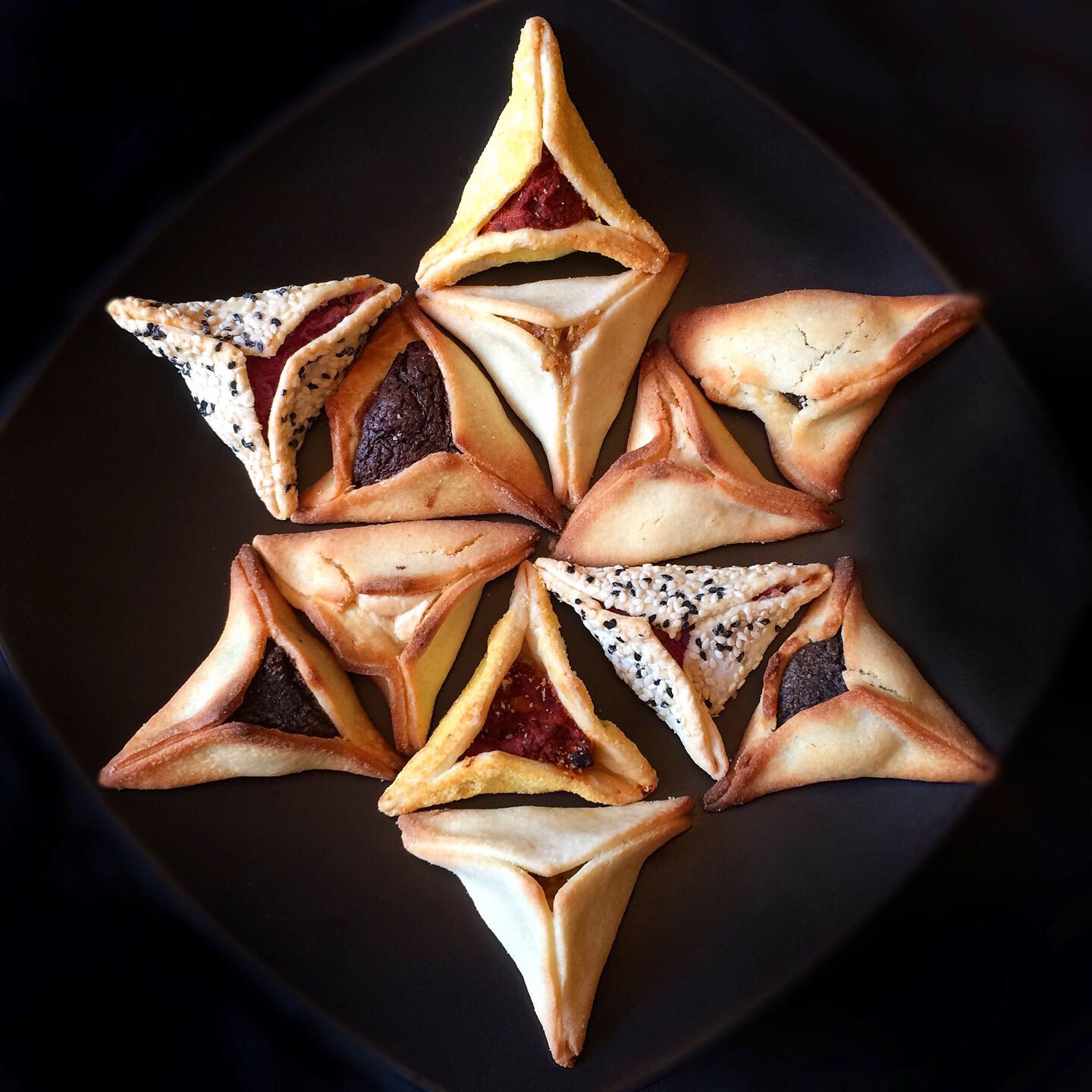
Hamantaschen are delicious triangular baked pastries conventionally filled with thick prune jam (lekvar) or ground poppy seeds (muhn), but these days creative cookery presents some serious competition. Happily, the always mind-blowing Breads Bakery, 18 E 16th St in Manhattan, covers the entire spectrum. On this plate, there’s sweet Poppy Seed, Halva, Chocolate, and Apple (their signature flavors) along with a pair of savory challengers, Purple Haze and Pizza. The former, covered in sesame and nigella seeds, holds sauerkraut – a little sweetish and worth a bite even if you don’t care for sauerkraut. The latter is filled with a blend of tomato paste, mozzarella and parmesan cheeses, basil, garlic, and olive oil and tastes exactly like what you’d expect with that set of ingredients; try warming this one up. Fusion food for sure.
 The following post is presented as a public service. 😉
The following post is presented as a public service. 😉
There seems to be some confusion regarding these two very dissimilar cookies with very similar names, but oh, what a difference an O makes. Let’s get the pronunciations out of the way first: macaroon rhymes with “black balloon” and if you honk the final syllable of macaron through your nez, you’ll nail the proper French pronunciation of that one.
Were the two cookies once a single biscuit that bifurcated due to some culinary tectonic shift? In search of the proto-macaroon, I consulted my copy of Larousse Gastronomique. There was a macaroon (their spelling) based on almond meal that has been made in a French monastery in Cormery since 791 (no, that’s not a typo) that’s not too different from one half of today’s macaron. I say half because the definition of a French macaron is that it comprises two almond flour cookies joined back to back by a sticky filling like jam or ganache. The seemingly infinite variety of flavors (more about that later) derives from the filling alone, and the coloring is just that: coloring. In my experience, they require the patience of a saint (or perhaps a monk) to produce competently.
Macaroons, in contrast, are quintessentially American; a mounded cookie consisting of shredded coconut, sugar, egg whites and sometimes sweetened condensed milk that in its rudimentary form is so uncomplicated as to make it a good candidate for a child’s first baking experience.
Etymologically, the word “macaron” makes a brief appearance in the writing of Rabelais in 1552. It stems from the Italian word “maccherone” meaning a “fine paste” (consider how the combined ingredients appear before baking) and yes, the word macaroni shares the same root (consider pasta/paste while you’re at it). Subsequently, it shows up in an English language recipe from 1611 that spells it “macaroon” and identifies the word as having been derived from the French “macaron”. So the words diverge centuries before the cookies do and the conflation conflagration begins.
The Renaissance version of the cookie itself was pretty well defined as a “small, round cookie, crunchy outside and soft inside, made with ground almonds, sugar and beaten egg whites” folded together, essentially what we think of as Italian amaretti. And so these macarons/macaroons prevailed for many years – there’s a recipe in Martha Washington’s Booke of Cookery – until just before the 20th century when two events occurred that altered the course of cookie history.
At that time, coconut palms were introduced to and cultivated in Florida and their fruit became the darling of the American kitchen. In 1871, Esther Levy published the first Jewish cookbook; it featured a recipe for macaroons in which grated coconut replaced the traditional almond flour. Because the dietary restrictions of the Jewish holiday Passover prohibit the consumption of leavened baked goods, coconut macaroons handily filled the dessert bill and they caught on.
A few years later, the Parisian bakery and tea salon, Ladurée, began selling almond flour macarons in pairs, flat sides back to back, with sweet fillings like ganache to hold them together. So at that juncture, we formally have two different cookies, each with its own proper name.
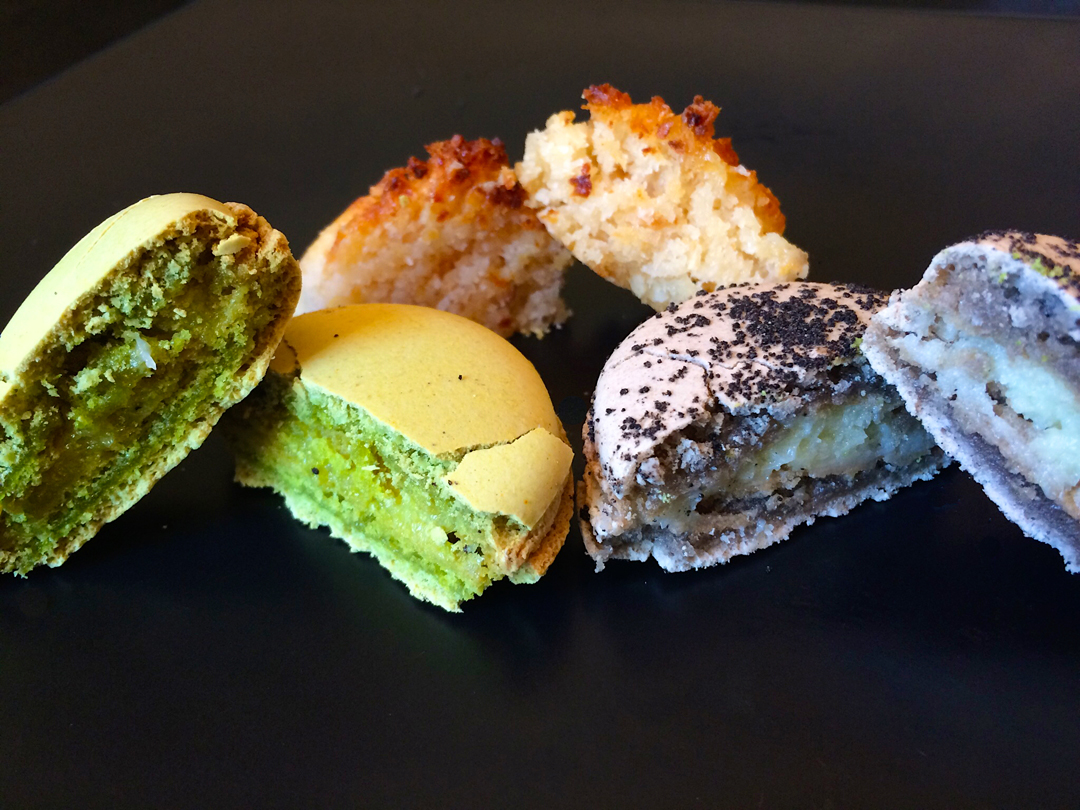
These days, French style macarons are quite trendy and can be found everywhere from fancy pâtisseries to bakery chains in Chinatown, although obviously the quality varies from venue to venue. This cutaway view shows the fillings inside a couple of macarons and the lack thereof in the standard issue macaroon. (The photo also serves to illustrate the way the cookie crumbles.)
Macarons come in several sizes but are always paired and share the classical puck-like shape. The sheer number of flavors to be found borders on the ridiculous and precludes any attempt at a comprehensive list, but you’ll see fruit flavors like cherry, banana, peach, pineapple, pomegranate, honeydew, coconut, papaya, passionfruit – actually pretty much every fruit you can name; what I’ll call “roasted bean” like coffee, latte, mocha, dark chocolate, milk chocolate, white chocolate; nuts like walnut, almond, pistachio; boozy specimens like Grand Marnier, Jack Daniels, Baileys Irish Cream, mojito; other dessert interlopers like crème brûlée, salted caramel, praline, Nutella, cotton candy, Oreo cookie (a cookie that’s designed to taste like another cookie?); Asian influences like pandan, durian, candied ginger, thai tea, red bean, mung bean, matcha tea, taro; floral/herbal flavors like lavender, mint, rose; and just plain brazen contenders like fois gras, wasabi, maple syrup & bacon, cheeseburger, bubblegum, Cheetos, and Vegemite. Mon dieu!
Then there are the double combinations like raspberry almond, blueberry cheesecake, lavender honey, white chocolate mint, strawberry kiwi, rhubarb cilantro and the like, not to mention triples like s’mores – you mathletes out there could calculate the permutations and combinations if only the flavor list weren’t infinitely long.
Not to be left out, popular brands of Passover macaroons including Manischewitz, Streit’s and Gefen have entered the fray but with somewhat less rebellious flavors like almond, chocolate chip hazelnut, red velvet, cookies & creme, pistachio orange, carrot cake, cappuccino, toffee crunch, chocolate mint, and purely coconut – again, a list that’s far from exhaustive.
I kind of like the fact that you can get almond macaroons and coconut macarons. Seems right somehow.
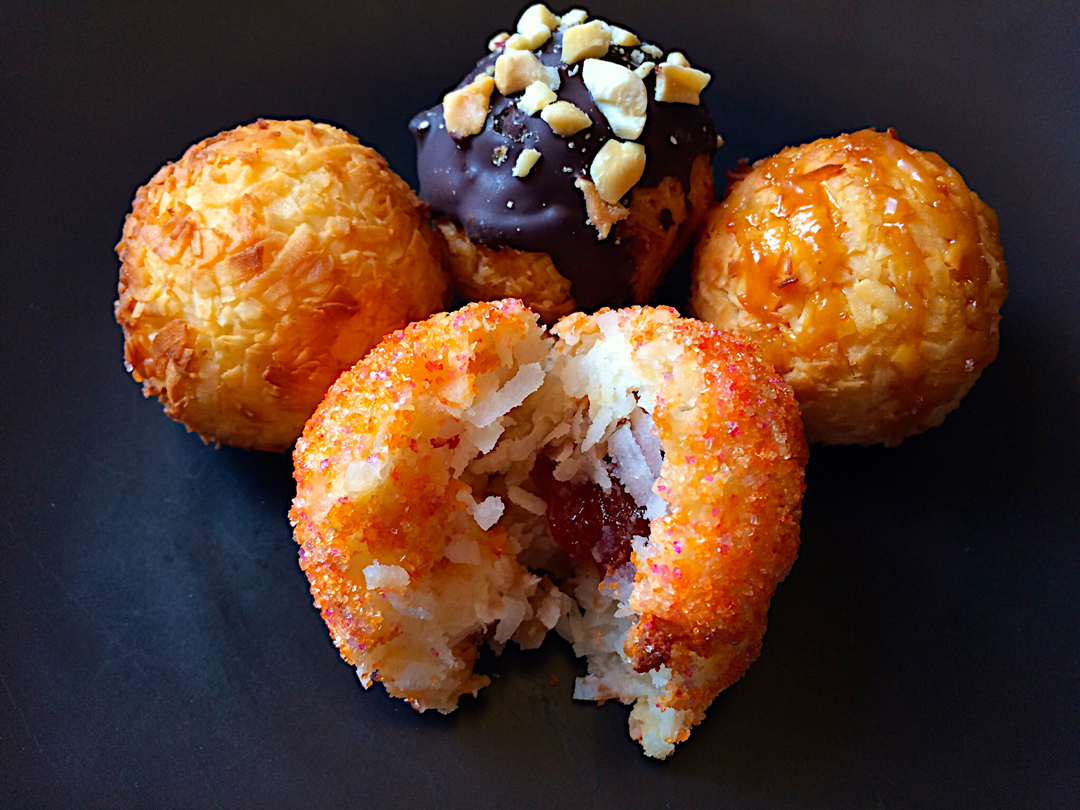
Beyond the popular brands of macaroons often sold in cans, I’m also seeing some serious bespoke examples at upscale bakeries. These second generation macaroons, if you will, turned up at the incredible 2018 World’s Fare in Queens and were crafted by Danny Macaroons: original coconut, peanut butter chocolate, salted caramel, and pineapple-guava filled.
Dedicated holidays cement the distinction: National Macaroon Day is celebrated on May 31; International Macaron Day appears to be tied to the first day of spring, around March 20. (There’s even a Chocolate Macaroon Day on June 3rd but it seems to embrace both macaroons and macarons.)
So armed with this fresh batch of information about the difference between macarons and macaroons, you can officially consider yourself one smart cookie. If you’re anything like me, you’re a fan of both!
(Note: Not to be confused with Emmanuel Macron, President of France. No relation.)
(Originally posted on April 20, 2019, in better times.)
(Click on any image to view it in high resolution.)

Previously on ethnojunkie.com, I did a springtime post that included a story about someone who dared me to come up with an ethnic fusion Passover menu. I wrote:
Well, far be it from me to dodge a culinary challenge! So although obviously inauthentic, but certainly fun and yummy, here’s to a Sazón Pesach!
Picante Gefilte Pescado
Masa Ball Posole
Brisket Mole
Poblano Potato Kugel
Maple Chipotle Carrot Tzimmes
Guacamole spiked with Horseradish
Charoset with Pepitas and TamarindoAnd, of course, the ever popular Manischewitz Sangria!
It was all in good fun, of course, but it got me thinking about actually creating a Jewish-Mexican fusion recipe. It isn’t strictly Kosher for Passover, but I thought the concept was worth a try. So here is my latest crack at cross cultural cooking: Masa Brei!
Now you might know that Matzo Brei (literally “fried matzo”) is a truly tasty dish consisting of matzos broken into pieces that are soaked briefly in warm milk (some folks use water), drained, soaked in beaten eggs until soft, then fried in copious quantities of butter. Typically served with sour cream and applesauce, it’s heimische cooking at its finest, Jewish soul food, and it’s easy to do.
So I thought it might be worth a try to swap out the matzos for tostadas, the milk for horchata, the sour cream for crema, and the applesauce for homemade pineapple-jalapeño salsa. A sprinkle of tajín, a scatter of chopped cilantro – and it actually worked!
Happy Passover!
!חג פסח שמח
The story of Purim memorializes the time in ancient Jewish history when Haman, royal vizier to King Ahasuerus of Persia, had been plotting to exterminate all the Jews in the empire. His plan was thwarted by Mordecai and Queen Esther, his adopted daughter, and the deliverance is one of joyful celebration, steeped in traditional ceremonies and festivities. Among the many icons of the holiday, one of the most renowned is the hamantasch, literally “Haman’s pocket”.
(Click on any image to view it in high resolution.)

Hamantaschen are delicious triangular baked pastries conventionally filled with thick prune jam (lekvar) or ground poppy seeds (muhn), but these days creative cookery presents some serious competition. Happily, the always mind-blowing Breads Bakery, 18 E 16th St in Manhattan, covers the entire spectrum. On this plate, there’s sweet Poppy Seed, Halva, Chocolate, and Apple along with a pair of savory challengers, Purple Haze and Pizza. The former, covered in sesame and nigella seeds, holds sauerkraut – a little sweetish and worth a bite even if you don’t care for sauerkraut. The latter is filled with a blend of tomato paste, mozzarella and parmesan cheeses, basil, garlic, and olive oil and tastes exactly like what you’d expect with that set of ingredients; try warming this one up. Fusion food for sure.
(Click on any image to view it in high resolution.)
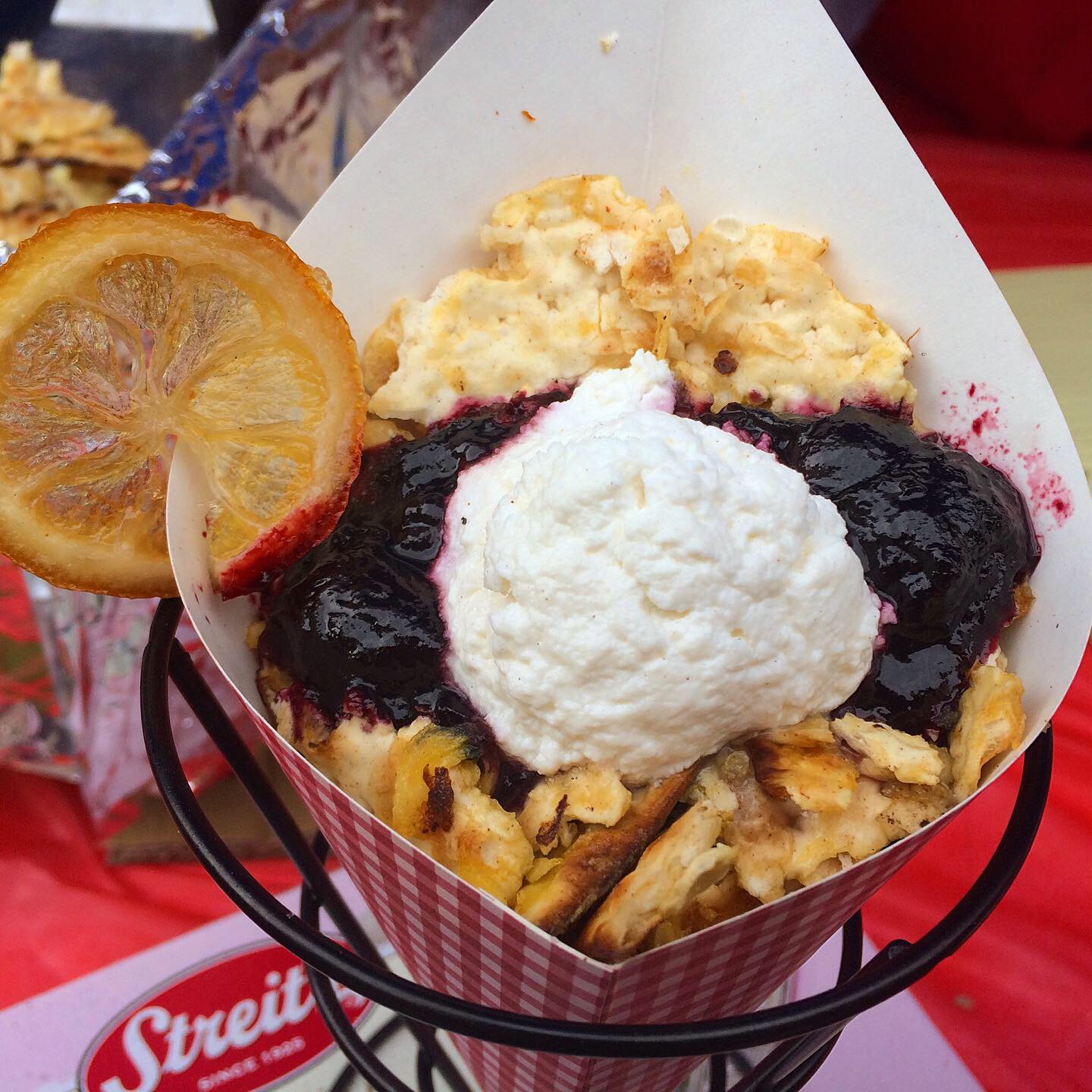

I’m not certain about the linguistic prowess of the folks from Oy Benne!, the Queen’s Night Market Italian-Jewish comfort food vendor, but I am certain about their cooking prowess. “Oy”, of course, is a Yiddish interjection, but were they trying for the Italian “Bene” meaning good? I was so taken with their culinary concept that I neglected to ask.
[1] Their gastronomic fusion idea is not lost in translation, however. Matzo Brei is a savory dish made from softened pieces of matzo soaked in beaten eggs and fried, the Jewish kitchen’s answer to French toast if you will. Traditionally accompanied by sour cream and applesauce, here it gets a sweet bacio from Italy by swapping in ricotta for the sour cream and cherry preserves for the applesauce, along with a few other tweaks to the canonical recipe.
[2] At the Queen’s Night Market press event, Oy Benne was featuring chopped chicken liver made with duck fat instead of schmaltz (chicken fat), unexpectedly served with a sweet, fruity topping. Matzo never had it so good. Check the QNM schedule to see when they’ll be there next.
Che geshmak!
(Click on any image to view it in high resolution.)

Previously on ethnojunkie.com, I did a springtime post that included a story about someone who dared me to come up with an ethnic fusion Passover menu. I wrote:
“Well, far be it from me to dodge a culinary challenge! So although obviously inauthentic, but certainly fun and yummy, here’s to a Sazón Pesach!
Picante Gefilte Pescado
Masa Ball Posole
Brisket Mole
Poblano Potato Kugel
Maple Chipotle Carrot Tzimmes
Guacamole spiked with Horseradish
Charoset with Pepitas and TamarindoAnd, of course, the ever popular Manischewitz Sangria!”
It was all in good fun, of course, but it got me thinking about actually creating a Jewish-Mexican fusion recipe. It isn’t strictly Kosher for Passover, but I thought the concept was worth a try. So here is my latest crack at cross cultural cooking: Masa Brei!
Now you might know that Matzo Brei (literally “fried matzo”) is a truly tasty dish consisting of matzos broken into pieces that are soaked briefly in warm milk (some folks use water), drained, soaked in beaten eggs until soft, then fried in copious quantities of butter. Typically served with sour cream and applesauce, it’s heimische cooking at its finest, Jewish soul food, and it’s easy to do.
So I thought it might be worth a try to swap out the matzos for tostadas, the milk for horchata, the sour cream for crema, and the applesauce for homemade pineapple-jalapeño salsa. A sprinkle of tajín, a scatter of chopped cilantro – and it actually worked!
Happy Passover!
!חג פסח שמח
(Click on any image to view it in high resolution.)
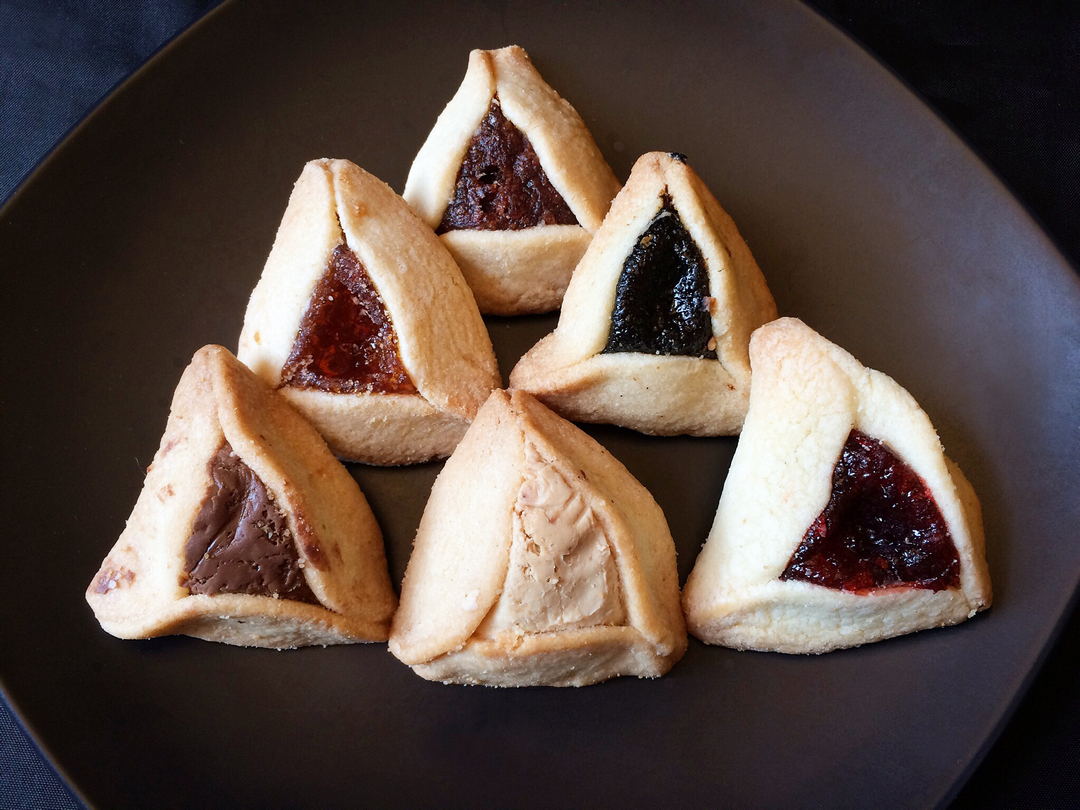
The story of Purim memorializes the time in ancient Jewish history when Haman, royal vizier to King Ahasuerus of Persia, had been plotting to exterminate all the Jews in the empire. His plan was thwarted by Mordecai and Queen Esther, his adopted daughter, and the deliverance is one of joyful celebration, steeped in traditional ceremonies and festivities. Purim begins tonight at sundown and concludes tomorrow evening, and among the many icons of the holiday, one of the most renowned is the hamantasch, literally “Haman’s pocket”.
Hamantaschen are delicious triangular baked pastries conventionally filled with thick prune jam (lekvar) or sweet ground poppy seeds (muhn) but these days creative cooking prevails and fillings of apricot, fig, chocolate, halvah, raspberry and more are not uncommon and take their place beside their predecessors. These fine examples came from Queens Kosher Pita & Bakery, 6838 Main St in Flushing.
Happy Purim!
!חג פורים שמח
Chag Purim Sameach!
Daylight Saving Time, my second favorite holiday after Christmas and the undisputed harbinger of Spring as long as you don’t look out your window, has at long last arrived. Two notable celebrations of the season, Easter and Passover, are concurrent this year, so this post is a nod to both. I haven’t forgotten Nowruz, of course, the Iranian (or Persian) New Year that occurs on the vernal equinox, but I feel that it deserves a post of its own accompanied by photos of delicious traditional foods which, with some luck, I’ll be able to provide.
It’s no coincidence that the Italian word for Easter (pasqua) and the Hebrew word for Passover (pesach) are closely related, although culinarily the holidays couldn’t be more disparate. During this time of year, Jewish families are expunging their homes of even the most minuscule crumb of anything leavened, and Italians are baking Easter breads like they’re going out of style.
Italy’s traditional seasonal bread is La Colomba di Pasqua (“The Easter Dove”), and it is essentially Lombardy’s Eastertime answer to Milan’s Christmastime panettone. These deliciously sweet, cakey breads, in some ways Italy’s gift to coffeecake but so much better, are fundamentally the same except for two significant distinctions: the colomba is baked in the shape of the iconic dove that symbolizes both the resurrection and peace, and the recipes diverge with the colomba’s dense topping of almonds and crunchy pearl sugar glaze. Traditionally, a colomba lacks raisins, favoring only candied orange or citron peel, but as with panettone, fanciful flavors (including some with raisins) proliferate. And also as with panettone, charming but somewhat specious tales of its origin abound. (If you haven’t already, please read my passionate paean to panettone for more information and folklore about this extraordinary contribution to the culinary arts.)
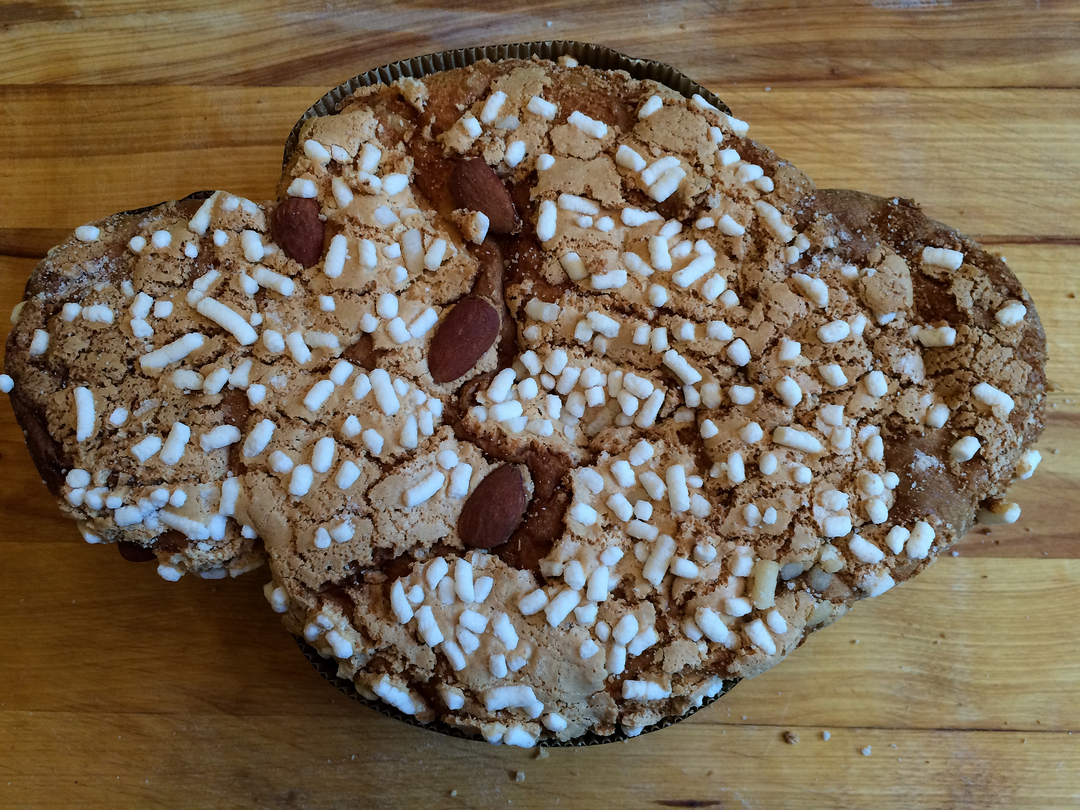
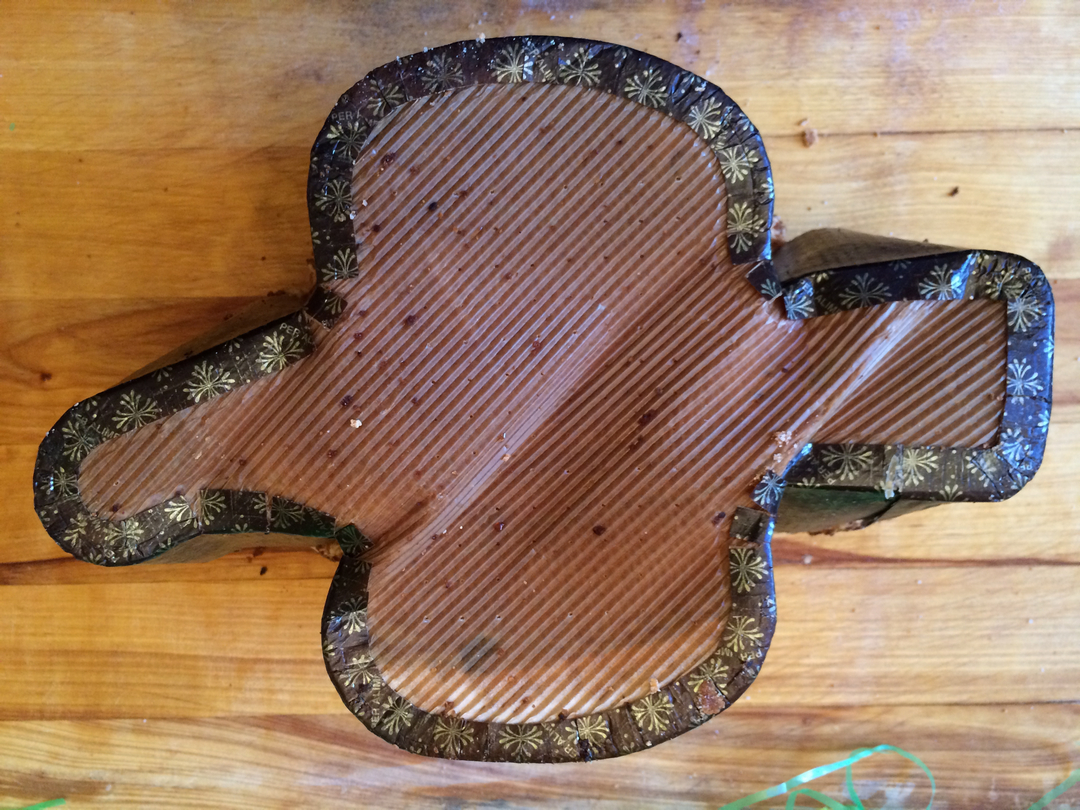
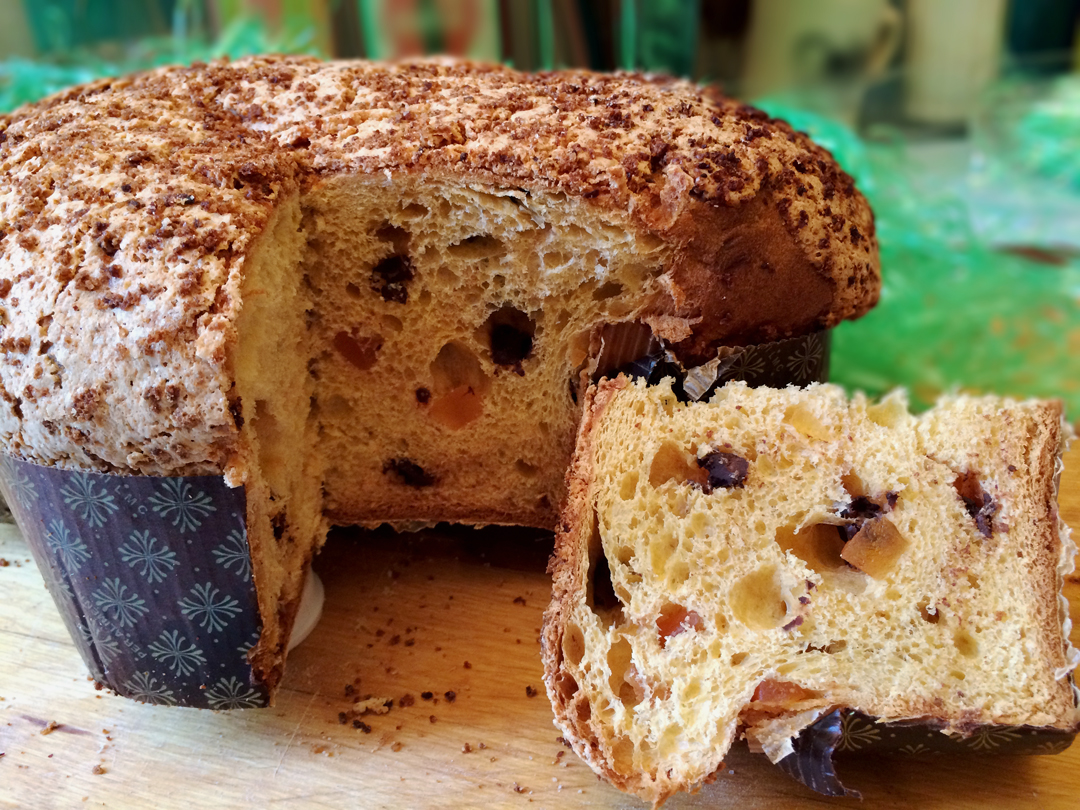 (Click any photo to see it in high resolution.)
(Click any photo to see it in high resolution.)
The first photo shows a colomba in all its avian splendor. Frankly, I think it’s a leap of faith to discern a dove in there, but if you can detect one, you may have just performed your own miracle.
Hard pressed to see the dove? Fret not, for the second photo has the cake turned upside down so the columbine form is somewhat more evident.
The third photo depicts a version that features bits of chocolate and dried peaches within and crunchy crushed amaretto cookies atop.
Just wondering: There’s no debate that American kids bite the ears off their chocolate Easter bunnies first. Do you suppose that Italian children start with the head, tail, or wings of the colomba?
On to Passover. Previously on ethnojunkie.com, I did a springtime post that included a story about someone who dared me to come up with an ethnic fusion Passover menu. I wrote:
“Well, far be it from me to dodge a culinary challenge! So although obviously inauthentic, but certainly fun and yummy, here’s to a Sazón Pesach!
Picante Gefilte Pescado
Masa Ball Posole
Brisket Mole
Poblano Potato Kugel
Maple Chipotle Carrot Tzimmes
Guacamole spiked with Horseradish
Charoset with Pepitas and TamarindoAnd, of course, the ever popular Manischewitz Sangria!”
It was all in good fun, of course, but it got me thinking about actually creating a Jewish-Mexican fusion recipe. It isn’t strictly Kosher for Passover, of course, but I thought the concept was worth a try. So here is my latest crack at cross cultural cooking: Masa Brei!
Now you might know that Matzo Brei (literally “fried matzo”) is a truly tasty dish consisting of matzos broken into pieces that are soaked briefly in warm milk (some folks use water), drained, soaked in beaten eggs until soft, then fried in copious quantities of butter. Typically served with sour cream and applesauce, it’s heimische cooking at its finest, Jewish soul food, and it’s easy to do.
So I thought it might be worth a try to swap out the matzos for tostadas, the milk for horchata, the sour cream for crema, and the applesauce for homemade pineapple-jalapeño salsa. A sprinkle of tajín, a scatter of chopped cilantro – and it actually worked! Here’s the finished product:
And no matter which one you’re celebrating (or perhaps all of them like me) – Happy Holidays!